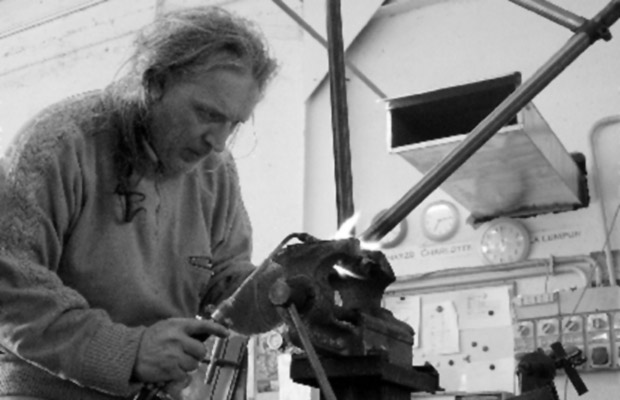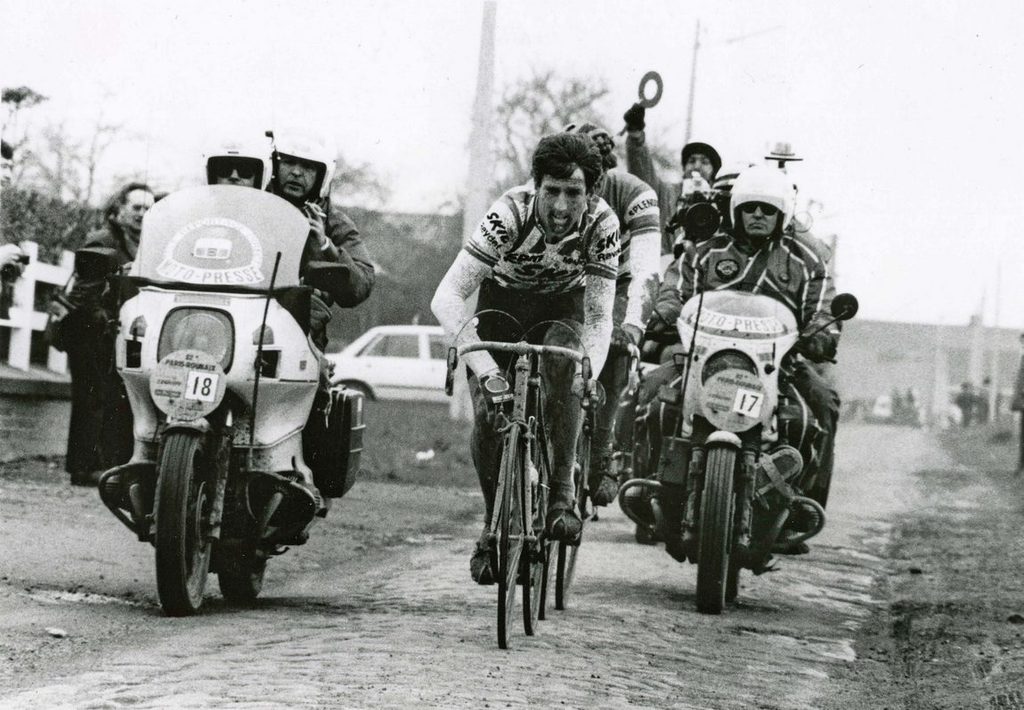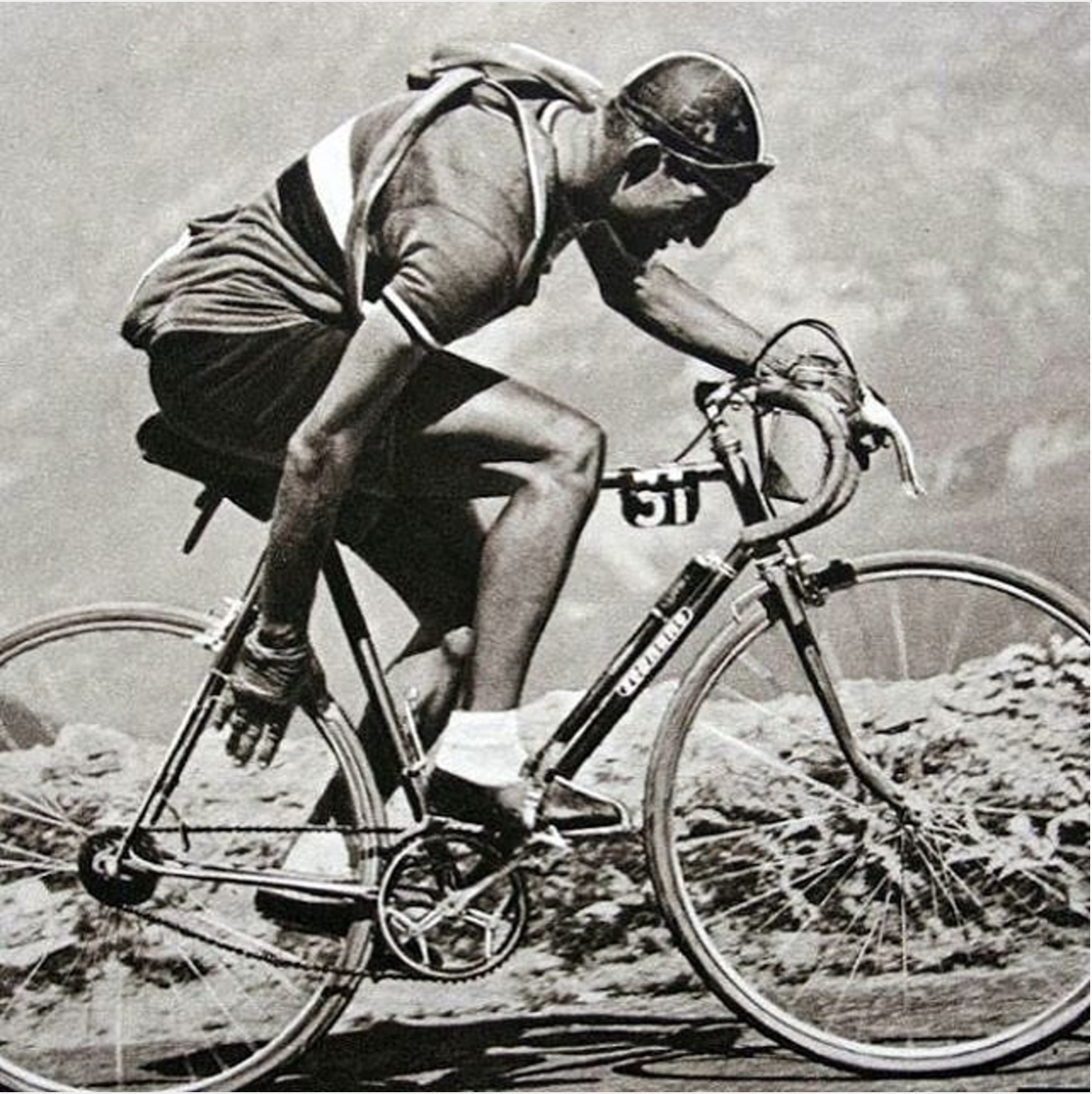Framebuilding: Subcontractors and Big Names

I’ve made mention before of Rouleur magazine and their amazing, in-depth articles. In one of the past issues, they had a wonderful piece on frame building in the eighties and nineties describing how many of the big names sourced the building of frames – especially custom frames – to subcontractors. The article focused on one contractor in particular, Dario Pegoretti, who went on to start a prestigious boutique bicycle business after the subcontracting business calmed down as advances in technology and frame building processes rendered custom frame building economically impractical for bicycle companies.
Some of the more observant members of society have possibly noticed that not every person is identical in appearance. In fact, those with the most critical eye for detail have probably reached the conclusion that most people are, in fact, of varying shapes and sizes. This seemingly unimportant fact presents a logistical nightmare for a bicycle manufacturer supplying frames to a professional team, particularly until the late nineties, when nearly every pro bike racer demanded custom geometry or had special material requirements. Custom geometry was in vogue and it resulted in hundreds of one-off, custom frame builds for the manufacturer supplying a team. The solution was to farm this work out to specialists who built the bikes to specification in their personal workshops and sent the frame back to be painted up with the company and team logos. The majority of bikes writing their riders and the company name into the history books were in fact built in tiny workshops by builders like Pegoretti.
I’m guessing a little bit at my next assertion because I wasn’t involved in the decision-making process, but this practice was a logical choice and was easily executed since steel frames were generally built out of fairly limited tube sets and built by using lugs or were TIG-welded together. Unpainted, frames from one company were in most respects indistinguishable from others, pending detailed inspection which might reveal signature details such as a stamp on a lug with the manufacturer’s name or logo. It was a far cry from today’s monocoque or semi-monocoque frame construction featuring proprietary tube shapes and frame design – instantly recognizable even from a distance. Those companies not using carbon or titanium often use proprietary aluminum and steel tubesets which also makes using subcontractors more complicated and they resorted to building their custom frames in-house.
As frame materials progressed towards more exotic and challenging materials such as carbon-fiber and titanium, more and more specialized knowledge was required for construction of the frames. Custom frame building gradually moved away from using an array of subcontractors and towards partnering with a specialized industry leader who had the expertise and equipment to work with the materials. For carbon frame construction, this meant not only the manufacture of tubes, but also bonding the tubes to aluminum lugs in use at the time; TVT was was the preferred partner for this in the eighties and nineties, building frames for everyone from Pinarello to Greg LeMond Bicycles. On the other hand, titanium requires such a high degree of skill and specialized knowledge that the industry leader was in such high demand that they eventually became their own company, Litespeed.
Custom frame building has gradually fallen out of fashion in the pro peleton. Today, while some pros still race custom bikes, most are riding molded carbon frames which are too costly for companies to customize. Riders who once insisted on custom geometry have found that through choices in stem-length, stem rise angles, and seatposts with varying amounts of setback, they are able to tailor the fit of their setup to suit their needs without requiring a custom frame. That said, in some cases, the geometry simply doesn’t work for a star rider and – if the rider is valuable enough – manufacturers have redesigned their frames in order to accommodate them; the most notable case being that of Tornado Tom Boonen and his Specialized Tarmac.
One of my bikes is a steel Bianchi built of Columbus TSX tubing, designed especially for riders exhibiting a condition cyclists commonly referre to as “being fat”. TSX was designed to be more durable and stiff for taller and heavier riders, complete with ovalization of the seat tube at the bottom bracket for added torsional stiffness. I bought the frame from a guy whose credibility I can’t verify but claims he got it from a pro who raced in Europe during the mid nineties and had the frame custom built for him.
There seems to be some degree of likelihood to the claim. The geometry of my TSX from 1996ish and my XLEV2 from 2002 is noticeably different, as you can see from the photos below (aside from the compact geometry). While I’m not saying Bianchi didn’t change their geometry, I like to dream that the TSX was built with love and care in a small workshop by an Italian specialist like Pegoretti – or even Pegoretti himself.
It doesn’t hurt to dream.
[album: http://filemanager.dutchmonkey.com/photoalbums.php?byfile=yes&file=02_Bee.jpg&currdir=/frank.dutchmonkey.com/personal/Pictures/Bikes/|height=500]


Nice Bianchi. That era of bikes just looks “right” to me. The carbon stuff is cool – I own that also – but my old school roots still digs the steel frames.
With the current wave of carbon, there seems to be a resurgence of interest in steel frames as well. Lucky for us, there’s an army of smaller builders – who can make some nice steel bikes anyway you want it.
You just need the dough…..
Nice post. Yeah, I must say I’d love to be able to afford a nice custom steel or Ti road bike. Maybe an Indy Fab, or these sweet Aussie machines from Baum. They are works of art.
What I would give for a Pegoretti. Those are gorgeous.
So although varied, the range of body types in the pro peloton is nowhere near what it is in broader society. Just think if they made custom frames for everyone. What a pain in the butt. When I look at some of the boutique builders offering stock frames in 15 sizes and offering custom sizes as well I just think at some point you just need to adjust your own damn body, cockpit, cleats, seat, etc. Just get in the same section and row of the ballpark and ride the damn thing.
But then again I also take solice in the fact my newish Alan was handcrafted in Italy by someone who knew what the hell they were doing and it fits me darn well.
@Dan O
Thanks. I love the steel. I don’t ride it as much as my carbon, but during parts of the season, I ride it a lot. During those times, I fall in love and I start to wonder and think, why do I bother with expensive materials?
Then I get on the R3 and I remember…Modern materials are here for a reason beyond fad, but the old adage is true: steel is real. The ride, the responsiveness, the road feel without jarring or jittering.
I was down at R&E in Seattle and they had a 14 pound steel ride set up, so you can’t say steel’s drawback is weight!
The idea of building up a classic (90’s C-Record) steel is top of my list of “cool projects”. Now I just need to win the lottery!
@brett
Woah. I never heard of Baum. That is a beaty!
@Marko
You bring up a great point. There are more body types in the general public, but they are also less highly trained and much less sensitive to subtle changes. I bet “Pops” isn’t very aware of his headtube angle and how it relates to cornering in the bunch on a mountain descent at 60 kmph.
With that in mind, it’s amazing to me the market for groups like Seven and IF and their apparent profitability in building custom frames for people. I’ve had several friends either lust after or actually buy such custom bikes. I always feel compelled to ask, “What, exactly, are you missing in a stock frame?” I rarely get a good answer (although sometimes I do).
Professionally, 95% of the problems my company comes in to solve are problems caused when an organization applies a solution to a poorly understood problem. Part of me thinks the custom frame building market stems from exploiting that same situation in the cycling world.
But it’s cool as shit. I would buy a Rodriquez in a heartbeat, given the funding. In fact, I’ve thought about how to replace my Zip, should something happen to it; it would be fun to have them build a Zip Replica.
I’m looking into buying a steel Traitor Exile frame/fork and dropping my extra ultregra groupo onto it. I’d really like a steel crappy weather beat arounder.
@Marko
Do it. Love the contrast lugs and the straight-blade fork. Of course, steel isn’t the best crappy-weather material given it’s proclivity to corrosion, which is why I opted for the XL EV2 as my rain bike, but that’s another topic altogether.
Gettin closer every day. The straigh-blade is sweet, no doubt. I’m thinking a chris king headset, external bb, drop my brooks saddle on there, and I’m good to go with everything else. I’m hoping they have a sale going into fall/winter. Maybe after interbike is done or something.
@Dan O
Can’t help but agree with you that you have to love the old steel and new steel bikes. Just finished building up the first bike I built, in 1983 (Reynolds 531), with era perfect Campy Nuovo Record components. Can’t wait for spring to get out and ride this bike again. Had the bike way longer than I have had my wife.
And I bet at least one of them has maintained its weight!
The Force has a “Dark side”, which feeds off emotions such as anger, jealousy, fear, and hate…
Ahah, wrong place to post this…
Not trying to bring you down, Frank, but the TSX was actually only the second-tier steel Bianchi of the mid-90s (behind the EL-OS model) and they were knocked out by the hundred from the Bianchi factory in Milan. Despite the chainstay decal I’m pretty sure the only contact they had with the famed Reparto Corse was the geometry.
To the best of my knowledge (and I was a Gewiss nerd and Bianchi owner at the time) none of the Bianchi pros even rode steel bikes while the TSX bike was being produced, except perhaps as training bikes. They all rode the titanium Ti-Megatube in racing…
But Frank, now you have a true “one off” built by some idiot in Idaho.
Well, when it comes to custom frames for “valuable riders”,
the Koga Kimera built for Theo Bos is probably the most exclusive
built.
Saw this article and need to bring Donhou Bikes to the attention of the Velominati. He makes some of the best looking bikes I have ever seen and I pay a lot of attention to bikes.
I contacted him recently about a frame and although not as expensive as I’d anticipated, I couldn’t afford what I wanted. No doubt his stock and therefore his prices will continue to rise, but his frsames are works of art and I’d rather one of his than a piece of black plastic.
@Jarvis
I’m with you on the Donhou bikes. I saw some of their bikes at the recent Bespoked Bristol show in the UK, and was very impressed.
Perogetti was also their showing off some quite lovely bikes.
I’m currently waiting(impatiently), for my own custom build to arrive from one of the finest UK framebuilders out there – Brian Rourke. I can’t wait!!!!